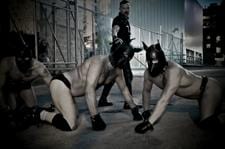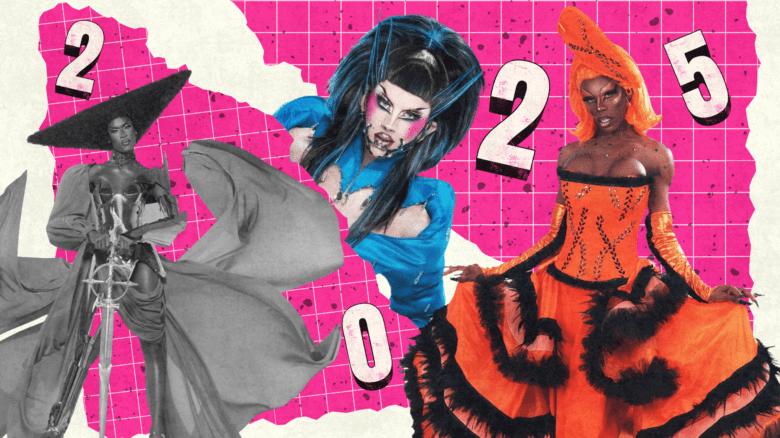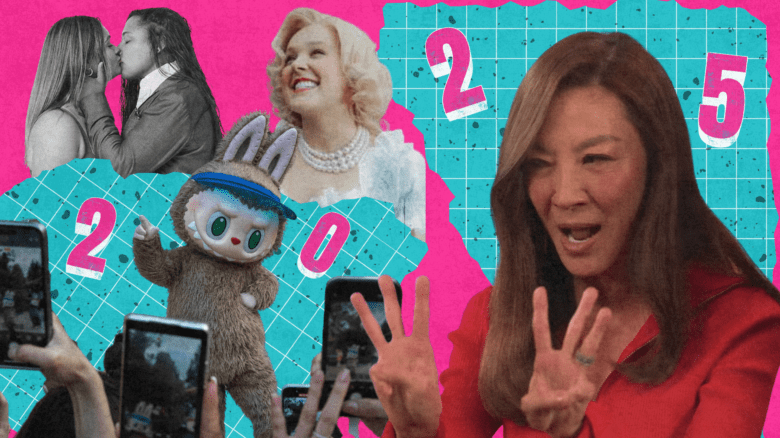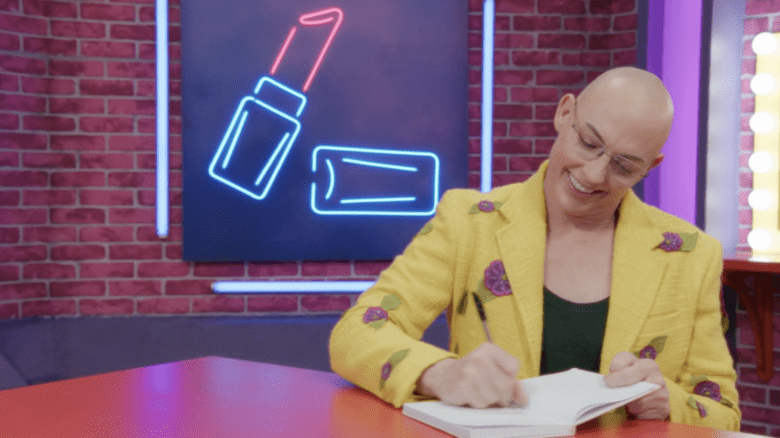His head is shaved, his muscular frame turned away from the lens. The halogen lights of a motorcycle cast a glow on brick. Both the man and the motorcycle’s headlights point to the right. So it takes a moment for the viewer’s eyes wander to the left, where two long chains and leather restraints hang.
Inked Kenny (nee Kenny Lee) has a knack for these kinds of images. Elsewhere, a man stands in front of a chain link fence in an industrial park. His handlebar mustache and shiny black boots lend him the aura of a security guard. In the foreground, three men in leather dog masks leer at the camera.
In another photo, a man with a Nazi armband and a tattoo that says “faggot” gets doused with water. He covers his face. Is that water? Or could it be gasoline? Or urine?
“I usually start a start a shoot with a basic idea,” says Lee. “I shoot randomly, and I let the model do whatever feels right for them.”
It helps, he says, that he picks models based on their creativity and sexiness.
In much of Lee’s work, he inverts the public and private parts of the body. The curve of a naked torso, the bulge of a jockstrap, and a naked ass are on full display, but more often than not the face is hidden — by the pose, the shadow or a submissive’s mask.
“If it’s out there, and you cannot put someone’s name to it right away, it’s a bit more mysterious, a little bit sexier.”
Lee’s spent the past 11 years in Toronto — “it was supposed to be stopover” — working in hair and make-up. His photo ambitions are a recent development, although he’s been around the world of aesthetics and photography for years.
Already, Lee is courting controversy. The promotional material for his show at La Petite Mort Gallery features the wet skinhead (it’s rainwater, as it turns out) as the main image. But the swastika is, strangely, blacked out.
During the Second World War, Nazis sent thousands of gay men to concentration camps for expressing deviant sexualities. More recently, the swastika has been reclaimed by some members of the gay community — gay skinheads.
Lee has mixed feelings about it. On the one hand, he says, “the symbol creates way too much controversy,” and he admits that he’s deleted it from the gallery’s rave cards.
On the other hand, he’s defiant of the urge to censor himself.
“There are tons of gay skinheads,” he says. “It’s there, it’s real. I’m not showing anything that’s fake.”
Lee hasn’t decided which version of the photo — with or without the swastika — will appear in the exhibition.


 Why you can trust Xtra
Why you can trust Xtra


